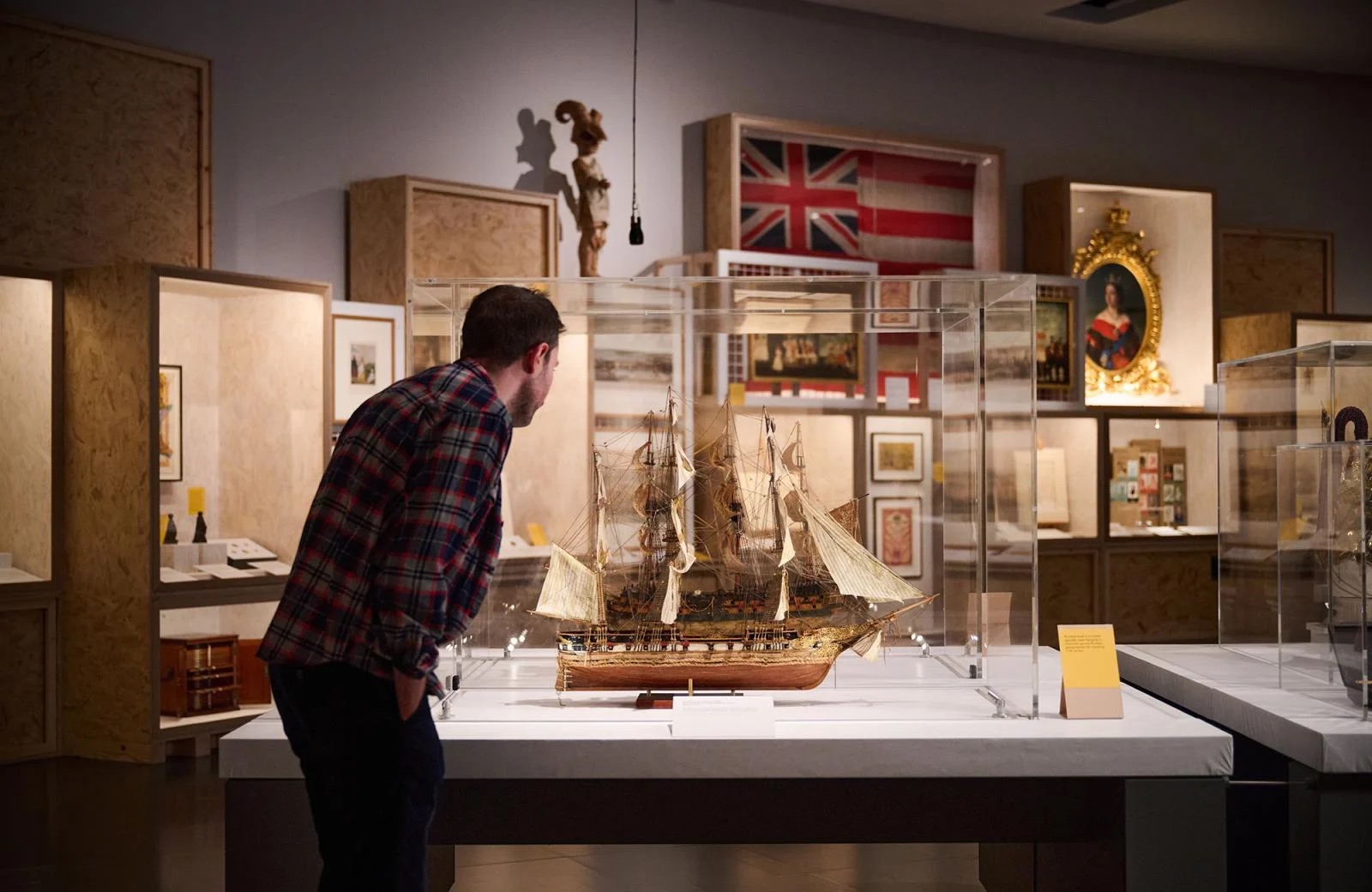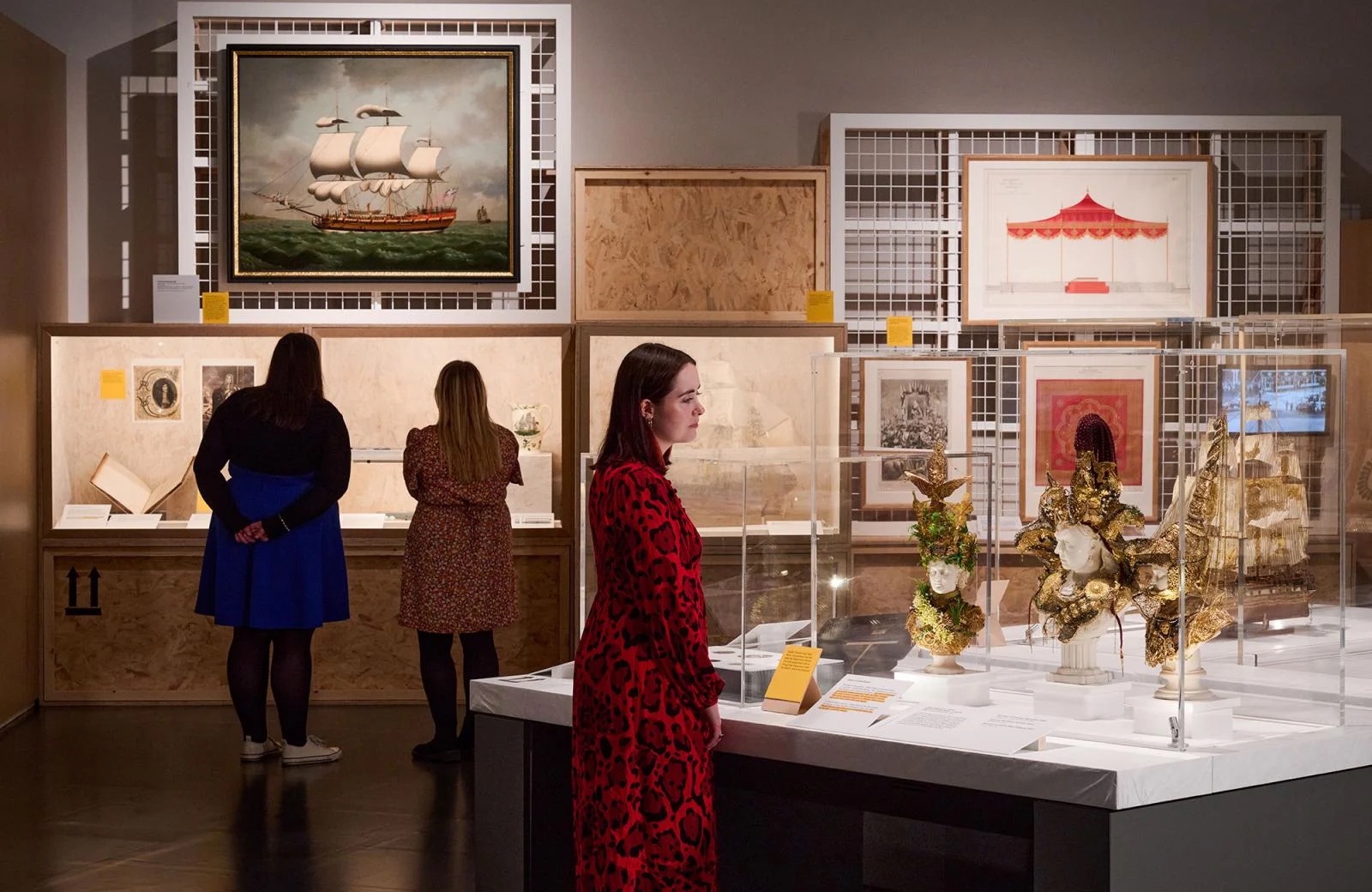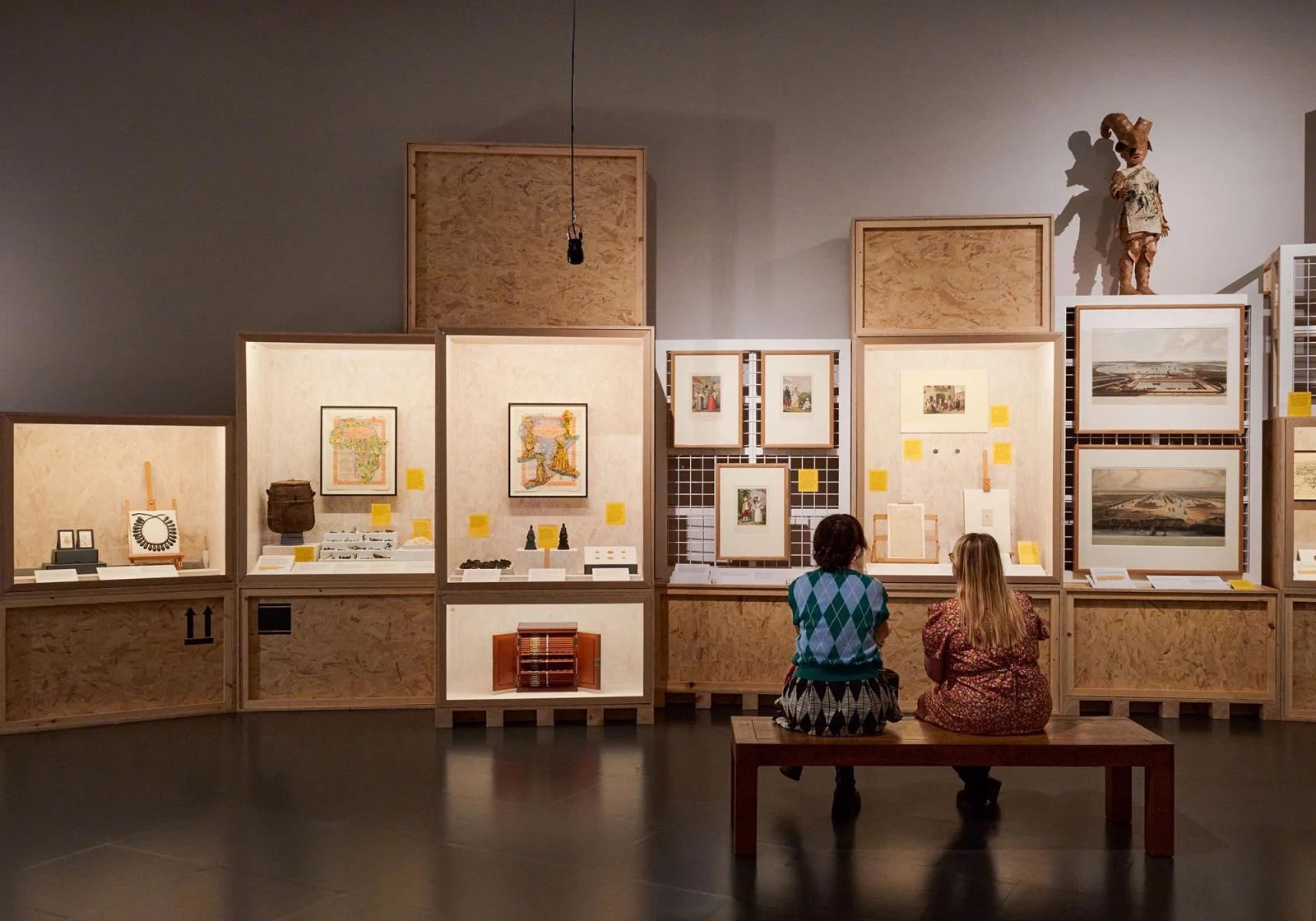Hew Locke: what have we here?
Ahead of giving the third RIBA x Grimshaw Foundation Annual Art Lecture, we sat down with Hew Locke and the curators of his new British Museum exhibition.
There is a lot to uncover at the British Museum.
It is a huge institution, housing artifacts, artworks and histories. From the Rosetta Stone to Beatrix Potter’s Flopsy Bunnies, there is a great deal of humanity to be seen within the objects on display. There are even more objects that remain unseen to the public, archived and stored away in the museum’s expansive collection. Yet embroiled in that humanity is a messy history of exploitation, colonialism and empire, with many of the museum’s objects being looted from their places of origin.

In his new exhibition ‘what have we here?’ Guyanese-British artist, Hew Locke, challenges previously held narratives around museums obtaining and displaying objects, and by extension, he questions the biased version of history being told to the public through these artifacts.
Working with his partner, curator Indra Khanna, and with several of the British Museum curators, Locke displays items in the museum’s collection from India, Africa and the Caribbean – areas that have had a significant influence on Guyana, a place where Locke spent many of his formative years. With his own reflections on yellow notes beside the objects, Locke provides personal and informative insights into the objects on display, reframing and shedding a light on centuries of colonial rule, commenting that ‘which history we remember depends on what is being made visible to you.’

This sense of visibility is evident in the very fabric of the exhibition, the storage container design of the space echoing that sense of uncovering what had previously been boxed away. For Locke, the audience brings the space to life, and the layout gives viewers the agency to freely discover the space and the objects in no particular order. But embedded within the exhibition are Locke’s new sculptures, The Watchers. With their armoured dress and horned masks, the figures loom above the display cabinets, acting as a ‘Greek chorus’, observing, or perhaps judging visitors as they themselves question ‘what have we here’?

One of the objects on display is an Asante pendant ‘used and worn by one of the Asantehene's (king's) more important soul priests in Ghana’. After being ‘taken during the third Anglo-Asante war (1873-74), the pendant was set in a silver-gilt dish by the London based Victorian jeweller R & S Garrard & Co in 1874, with a design that echoes that of the pendant’. The dish reflects the subsuming impact of colonial power, and perhaps acts as a metaphor for museums taking and keeping objects, removing them from their places of origin and branding them with a new contextual identity – ‘British’.

Locke does not shy away from the museum’s, or even his own complicity in Empire, with one of the final items on display being his OBE. A note alongside the medal reads: ‘the medal – my own treasure really – is here to acknowledge that I’m embedded in a certain culture. I’m not looking down and judging’. To the right of the medal sits a replica of an Ife head sculpture – the existence of which questions the need for ‘real’ artifacts in museums. And to the left sits a Sankofa bird gold weight, reflecting the Akan proverb: ‘look to the past in order to move forward’. With these last three objects, Locke emphasises the fact that, with this exhibition, he is not trying to answer questions. Rather, he hopes that it will act as a springboard for complicated discussions around the past and meaningful possibilities for the future.

Watch the videos below to hear more from Hew Locke, and British museum curators: